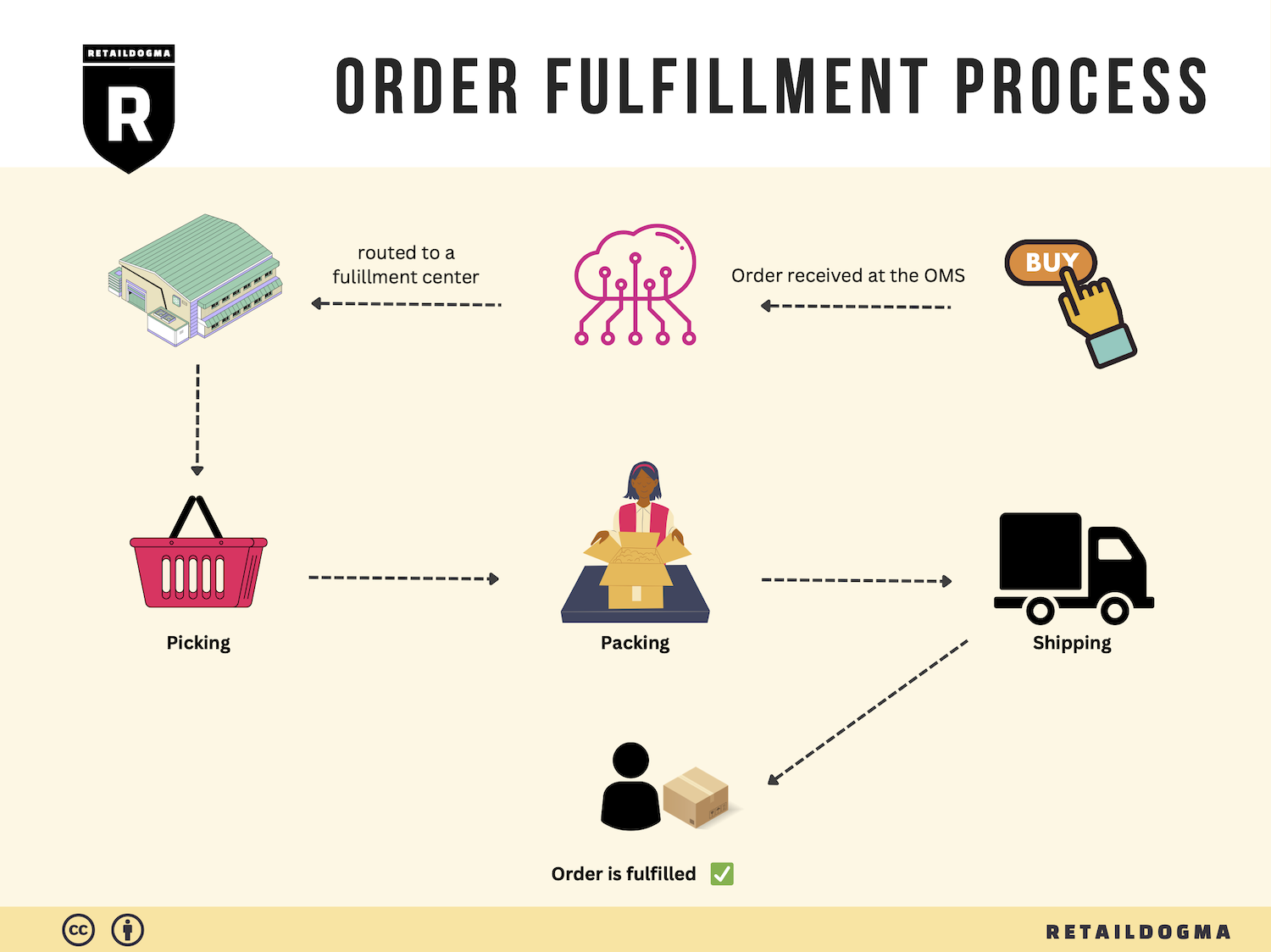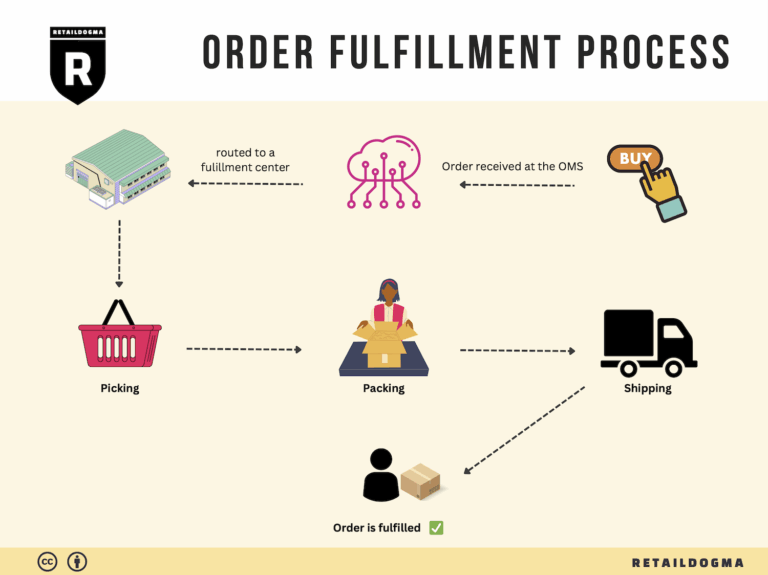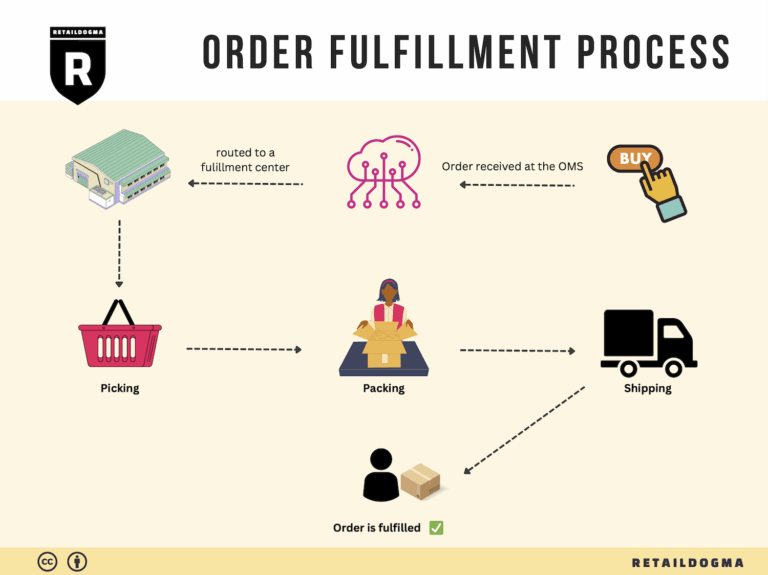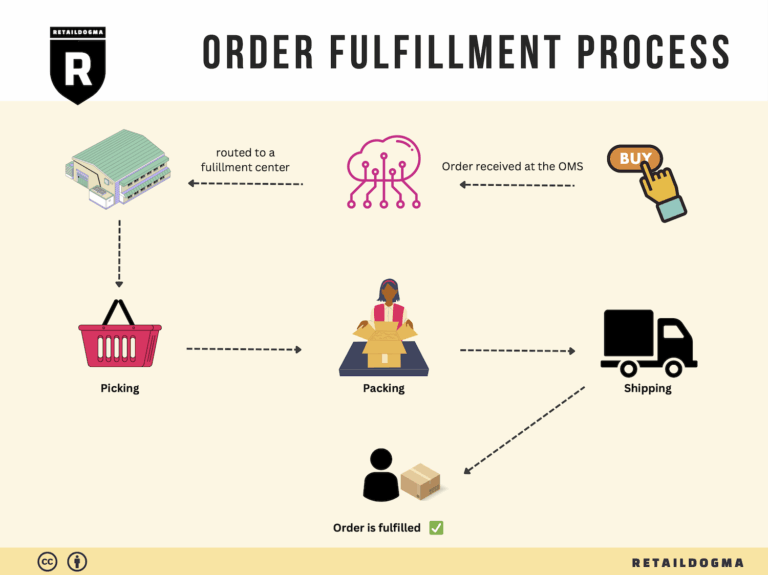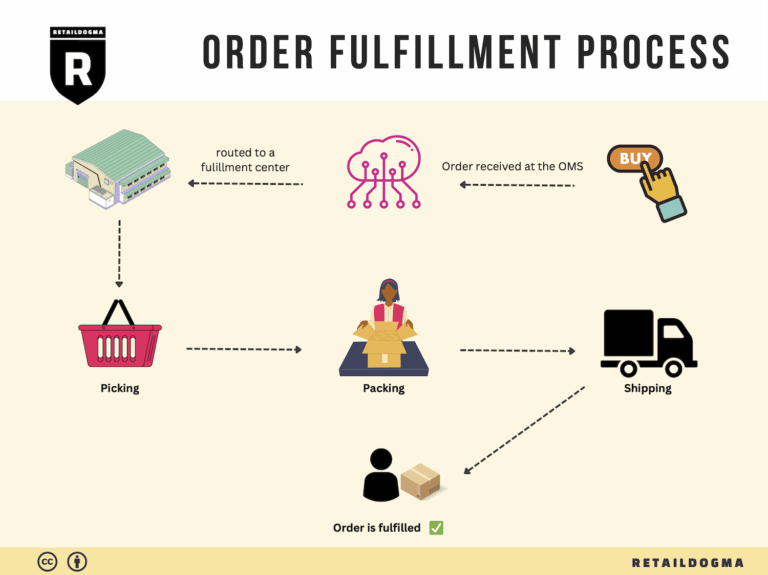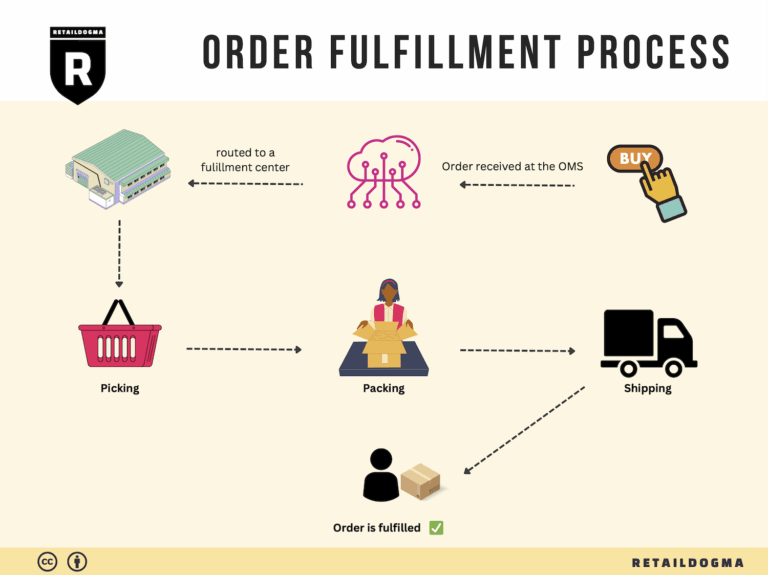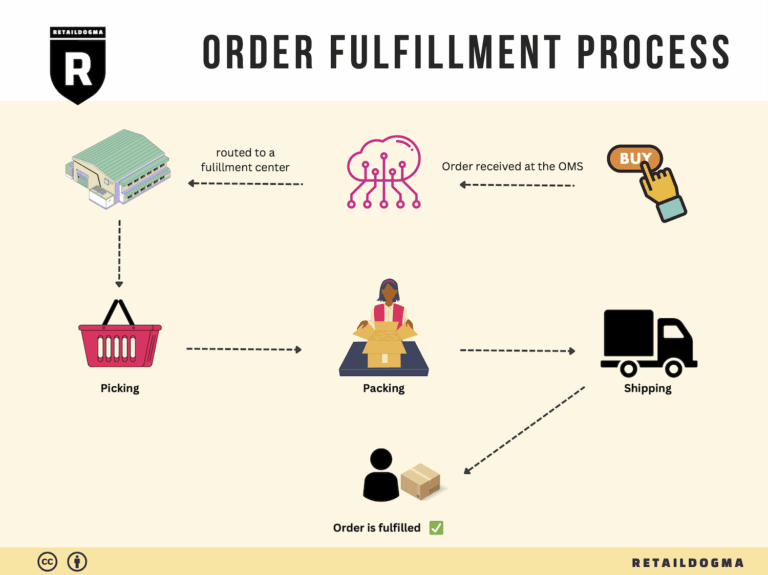Ecommerce Fulfillment Services: The Ultimate Guide (2025)
What is E-commerce Fulfillment? An Introduction for Growing Businesses
Understanding the Challenges of E-commerce Fulfillment
As an e-commerce business owner, you may find yourself grappling with the overwhelming task of packing and shipping orders. Managing inventory, ensuring timely deliveries, and providing excellent customer service can quickly become a daunting challenge. The reality is that while you focus on scaling your sales, the logistics of getting products to your customers can drain your resources and attention. This is where effective e-commerce fulfillment comes into play.
Fulfillment is essentially the process of getting a product from your warehouse or supplier to the customer’s doorstep. It encompasses a range of activities, including inventory management, order processing, packing, shipping, and handling returns. A well-structured fulfillment strategy not only enhances customer satisfaction but also improves your operational efficiency, allowing you to concentrate on growing your business.
What This Guide Covers
In this guide, we will explore the various aspects of e-commerce fulfillment that every growing business should understand. We’ll start by discussing different fulfillment models, such as Third-Party Logistics (3PL) and Fulfillment by Amazon (FBA), and how they can fit into your business strategy. Each model has its advantages and potential drawbacks, and knowing which one aligns best with your operational goals is crucial.
Next, we will delve into the core services that fulfillment providers typically offer. These include storage, inventory management, order processing, packing, and shipping. Understanding these services will help you identify what you need and what to expect from a fulfillment partner.
Choosing the right fulfillment partner is another key focus of this guide. We will provide you with practical tips on how to evaluate potential partners based on factors such as reliability, technology, scalability, and customer service.
Finally, we’ll discuss pricing models associated with fulfillment services. Understanding the cost structures will empower you to make informed financial decisions that align with your business budget and growth aspirations.
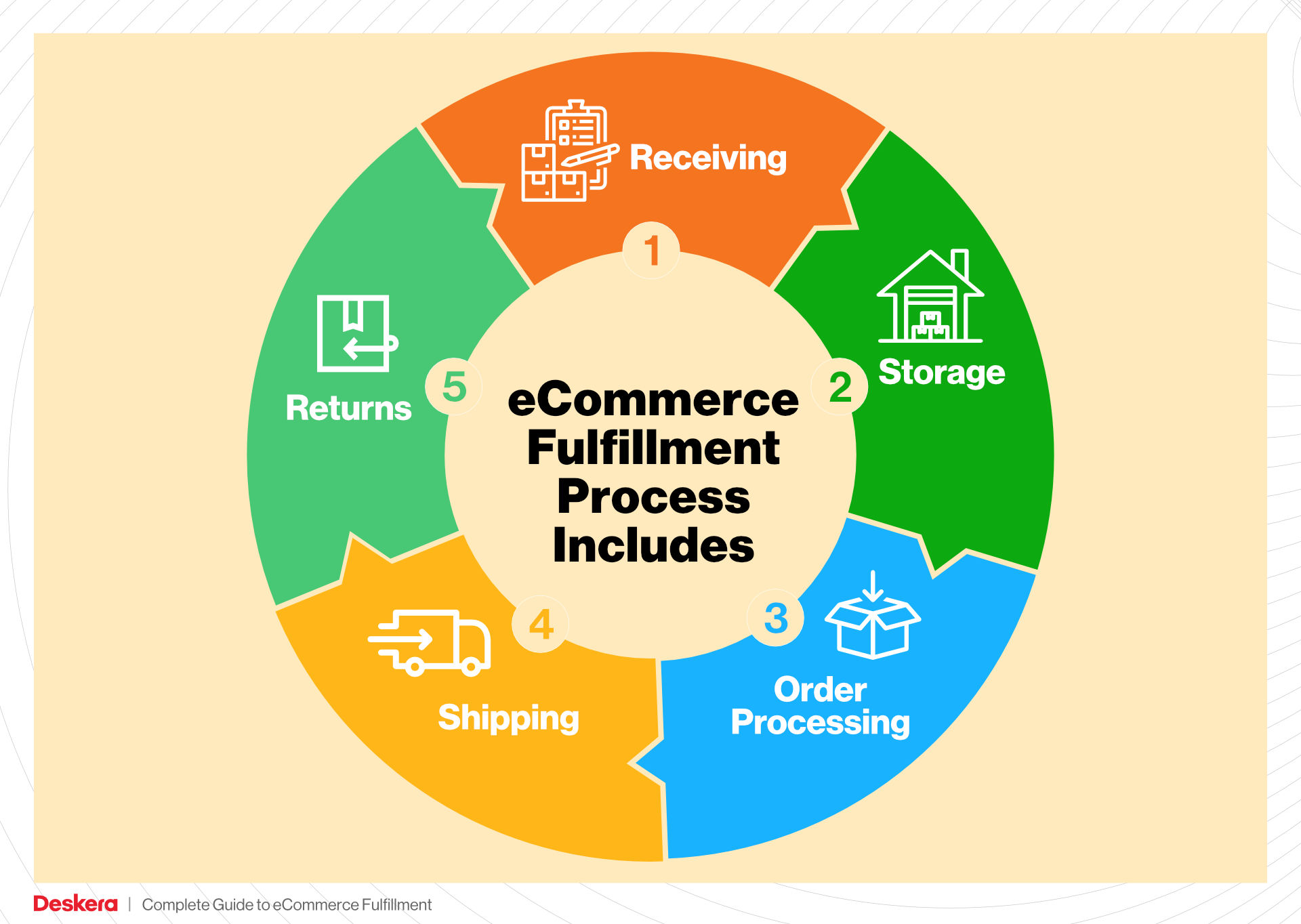
Empowering Your Logistics Decisions
The goal of this guide is to empower your business to make smart decisions about logistics and fulfillment. By understanding the intricacies of e-commerce fulfillment, you can streamline your operations, enhance customer experience, and ultimately, drive your business growth. Whether you’re just starting or looking to scale, the insights provided here will equip you with the knowledge needed to navigate the complexities of fulfillment effectively.
What You’ll Learn In This Guide
- What is E-commerce Fulfillment? An Introduction for Growing Businesses
- The Order Fulfillment Process: From ‘Buy’ Button to Customer’s Door
- Comparing Fulfillment Models: In-House vs. 3PL vs. Dropshipping
- A Deep Dive into Amazon FBA: Pros, Cons, and Who It’s For
- Core Services Offered by Fulfillment Centers
- How to Choose a Fulfillment Partner: A 6-Point Checklist
- Understanding Fulfillment Pricing: A Breakdown of Common Fees
- Frequently Asked Questions (FAQs) about Fulfillment
- Conclusion: Is Outsourcing Fulfillment the Right Move for Your Business?
- Important Disclaimer
The Order Fulfillment Process: From ‘Buy’ Button to Customer’s Door
1. Receiving Inventory
The order fulfillment process begins with receiving inventory at your fulfillment center. This step is crucial as it sets the stage for effective inventory management. When products arrive from suppliers, they must be checked against purchase orders to ensure accuracy. This involves verifying quantities, inspecting for damages, and logging items into your inventory management system.
Key Term: SKU (Stock Keeping Unit) – Each product is assigned a unique SKU, which facilitates tracking and management throughout the fulfillment process. Properly recording SKUs during the receiving phase helps prevent discrepancies and stockouts later on.
Effective receiving practices lead to accurate inventory levels and reduced errors, which can significantly impact customer satisfaction. A well-organized receiving area and streamlined processes enhance efficiency, allowing for quicker turnaround times on orders.
2. Warehouse Storage
Once inventory is received, the next step is warehouse storage. Proper storage is vital for maintaining product integrity and optimizing the picking process. Products are organized in a logical manner, often categorized by type, size, or sales velocity. This organization not only maximizes space but also minimizes the time required to locate items when orders are placed.
Key Term: Bin Location – Each item is assigned a specific bin location in the warehouse. This helps staff quickly find products when they are needed for order fulfillment. A systematic approach to storage can drastically reduce the time spent searching for products, which directly impacts order processing speed.
Investing in effective warehouse layout and storage solutions can lead to improved operational efficiency and better inventory turnover rates, ultimately supporting your business’s scalability.
3. Order Picking
Order picking is the process of selecting items from inventory to fulfill customer orders. This step is critical, as it directly affects order accuracy and delivery speed. There are various picking methods, such as single order picking, batch picking, and zone picking, each with its advantages depending on your order volume and product variety.
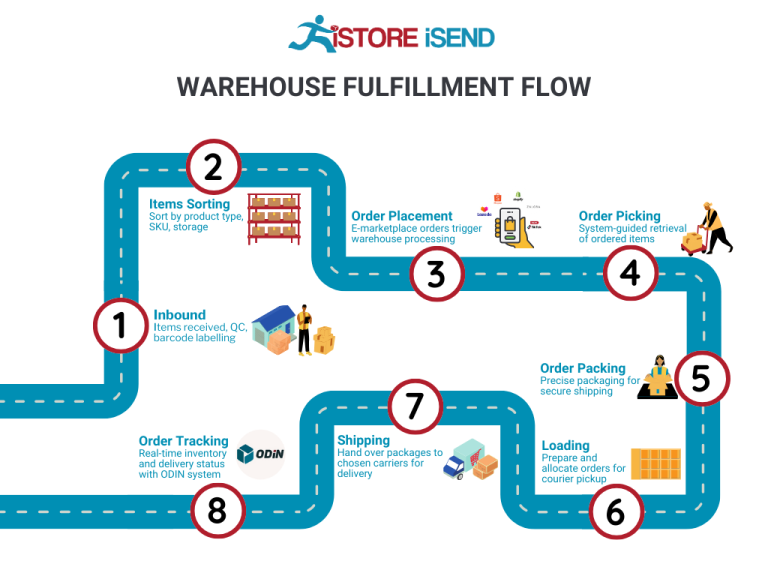
Key Term: Pick Lists – A pick list is generated from the order management system, detailing the items and quantities needed for each order. This document guides warehouse staff through the picking process, ensuring that the correct items are selected efficiently.
An effective picking process reduces the chances of errors and enhances productivity. Training staff on best practices for picking, as well as utilizing technology like barcode scanners, can further improve accuracy and efficiency.
4. Order Packing
After items have been picked, they must be packed for shipment. Packing is not just about placing products in boxes; it involves selecting appropriate packaging materials, ensuring items are secure, and preparing shipping labels. Proper packing protects products during transit and reflects your brand’s commitment to quality.
Key Term: Packing Slip – A packing slip is included in the shipment, detailing the items enclosed. It serves as a confirmation for customers and helps prevent disputes over missing items.
Attention to detail during the packing process can enhance the customer experience. Ensuring that packages are well-packed and professionally presented can lead to positive reviews and repeat business, which are crucial for scaling your e-commerce operations.
5. Shipping & Delivery
The final step in the order fulfillment process is shipping and delivery. Once packages are packed, they are handed over to carriers for transportation to the customer. This step is critical for meeting customer expectations regarding delivery times and service quality.

Key Term: Last Mile Delivery – This term refers to the final step of the delivery process when the package is transported from the distribution center to the customer’s doorstep. It is often the most expensive and logistically challenging part of the shipping process.
Choosing reliable shipping partners and optimizing routes can improve delivery times and reduce costs. Additionally, providing customers with tracking information enhances transparency and builds trust in your brand.
In conclusion, understanding and optimizing each step of the order fulfillment process is essential for e-commerce businesses looking to scale. From receiving inventory to ensuring timely delivery, each stage impacts customer satisfaction and operational efficiency. By focusing on these key areas, you can create a seamless fulfillment experience that supports growth and enhances your competitive edge.
Comparing Fulfillment Models: In-House vs. 3PL vs. Dropshipping
Fulfillment Model Comparison
| Model | Who Handles Inventory | Best For (Business Stage) | Key Advantage | Key Disadvantage |
|---|---|---|---|---|
| In-House Fulfillment | Business itself | Established businesses with stable sales | Greater control over inventory and fulfillment processes | Higher overhead costs and labor requirements |
| Third-Party Logistics (3PL) | Third-party providers | Growing businesses looking to scale quickly | Access to advanced logistics technology and expertise | Less control over inventory and potential for service variability |
| Dropshipping | Supplier or manufacturer | Startups and businesses testing new products | Low upfront investment and reduced risk | Lower profit margins and reliance on suppliers for stock and shipping |
In-House Fulfillment
In-house fulfillment involves managing the entire inventory and shipping process within your own organization. This model is typically best suited for established businesses with stable sales and sufficient resources. By handling fulfillment internally, businesses gain complete control over their inventory, allowing for tailored processes that meet specific customer demands. This can lead to enhanced customer satisfaction through faster shipping times and personalized service. However, the key disadvantages include higher overhead costs associated with warehousing, labor, and technology investments. Additionally, managing logistics can divert focus from core business activities, potentially hindering growth and innovation.
Third-Party Logistics (3PL)
Third-party logistics providers (3PLs) offer outsourced logistics services that encompass a range of functions, including warehousing, inventory management, and shipping. This model is particularly advantageous for growing businesses that seek to scale quickly without the burden of managing logistics operations. By partnering with a 3PL, companies can leverage advanced logistics technology, expertise, and established networks, which can significantly enhance operational efficiency and reduce shipping times. However, the trade-off is that businesses relinquish some control over their inventory and fulfillment processes. Variability in service quality among 3PL providers can also pose risks, particularly if the provider fails to meet customer expectations or maintain accurate inventory levels.
Dropshipping
Dropshipping is a fulfillment method where the retailer does not hold inventory but instead transfers customer orders directly to suppliers, who then ship the products to the customer. This model is ideal for startups and businesses testing new products, as it requires minimal upfront investment and eliminates the need for warehousing. The primary advantage of dropshipping is that it significantly reduces financial risk; businesses only purchase inventory after a sale is made, allowing for greater flexibility in product offerings. However, dropshipping also comes with its challenges, including lower profit margins and a heavy reliance on suppliers for stock availability and shipping reliability. Businesses must carefully select suppliers to ensure quality and timely delivery, as any delays or issues can negatively impact customer satisfaction.
In summary, the choice of fulfillment model depends on various factors including business stage, resource availability, and strategic goals. Each model has distinct advantages and disadvantages that must be weighed carefully to align with the overall business strategy and customer expectations. As e-commerce continues to evolve, understanding these fulfillment models will be crucial for businesses seeking to scale efficiently and effectively.
A Deep Dive into Amazon FBA: Pros, Cons, and Who It’s For
Understanding Fulfillment by Amazon (FBA)
Fulfillment by Amazon (FBA) is a service that allows e-commerce sellers to store their products in Amazon’s fulfillment centers. Amazon takes care of storage, packaging, shipping, and customer service for these products. This service is designed to streamline the logistics and fulfillment process for sellers, enabling them to focus more on growing their businesses rather than managing inventory and shipping logistics.
How FBA Works
-
Product Listing: Sellers create product listings on Amazon, indicating that they will use FBA for fulfillment.
-
Inventory Shipment: Sellers ship their products to Amazon’s fulfillment centers. They can send one shipment to multiple centers, as Amazon has a sophisticated distribution network.
-
Storage: Amazon stores the products in their warehouses. Sellers are charged storage fees based on the space their products occupy.
-
Order Fulfillment: When a customer places an order, Amazon picks, packs, and ships the product directly to the customer. They also handle returns and customer service.
-
Tracking and Customer Service: Sellers can track their inventory and sales through the Amazon Seller Central dashboard. Amazon provides customer service for the orders fulfilled through FBA.
Pros of Using FBA
1. Prime Eligibility
One of the most significant advantages of FBA is that products fulfilled through Amazon become eligible for Amazon Prime. This means that Prime members can receive products with free two-day shipping, which significantly enhances the attractiveness of a seller’s products. Studies show that Prime members tend to spend more than non-Prime members, which can translate into increased sales for sellers.
2. Enhanced Customer Trust
Products fulfilled by Amazon carry a level of trust and credibility. Amazon’s reputation for excellent customer service means that customers are more likely to purchase items fulfilled by FBA. This can lead to higher conversion rates, as buyers often prefer the reliability associated with Amazon’s fulfillment.
3. Multi-Channel Fulfillment
FBA is not limited to sales through Amazon’s platform. Sellers can also use FBA to fulfill orders from their own websites or other sales channels. This means that sellers can manage their inventory in one place while fulfilling orders across multiple platforms, simplifying operations and logistics.
4. Time and Resource Savings
By outsourcing fulfillment to Amazon, sellers can save time and resources. They can focus on other critical aspects of their business, such as marketing, product development, and customer engagement, rather than dealing with the complexities of warehousing and shipping.
5. Scalability
FBA allows sellers to scale their businesses without the need to invest in warehousing or logistics infrastructure. As sales grow, sellers can send more inventory to Amazon without needing to worry about the logistics of storage and shipping.
Cons of Using FBA
1. High Fees
While FBA offers many advantages, it also comes with costs. Sellers are charged storage fees based on the amount of space their products occupy and fulfillment fees for each order shipped. These costs can add up, particularly for low-margin products, which can impact overall profitability.
2. Strict Inventory Rules
Amazon has strict inventory management policies that sellers must adhere to. This includes limitations on the amount of inventory that can be sent to fulfillment centers and the requirement to maintain a certain level of product availability. Sellers who do not comply with these rules may face penalties or account suspension.
3. Commingling Risks
Amazon uses a commingled inventory system, meaning that inventory from different sellers may be stored together. This can lead to issues where products are mixed up, resulting in customers receiving the wrong item. While Amazon provides reimbursement for lost or damaged inventory, sellers may still face customer service challenges due to these mix-ups.
4. Less Control Over Fulfillment
By using FBA, sellers relinquish some control over the fulfillment process. This includes packaging and shipping, which may not align with a seller’s brand image or customer experience expectations. Additionally, sellers have limited ability to manage shipping times during peak seasons.
5. Dependency on Amazon
Relying on Amazon for fulfillment can create a dependency that may not be sustainable in the long term. Changes in Amazon’s policies, fees, or algorithms can significantly impact a seller’s business without notice.
Who is FBA Best For?
FBA is best suited for:
-
Small to Medium-Sized Businesses: Sellers looking to scale without the overhead of managing their own fulfillment centers can benefit significantly from FBA. It allows them to focus on growth while Amazon handles logistics.
-
High-Volume Sellers: Businesses that expect to sell a large volume of products can leverage FBA to manage the increased demand efficiently.
-
Brands with Established Products: Established brands with a proven track record can benefit from the credibility that comes with FBA, attracting more customers through Prime eligibility.
-
E-commerce Entrepreneurs: New entrepreneurs looking to test the waters without significant upfront investment in logistics may find FBA to be an ideal solution.
In summary, Fulfillment by Amazon offers a powerful solution for e-commerce sellers seeking to enhance their logistics and customer service capabilities. While there are some trade-offs, the benefits can significantly outweigh the drawbacks for many businesses, especially those aiming to scale their operations efficiently. Understanding these dynamics can help business owners make informed decisions about whether FBA aligns with their long-term growth strategies.
Core Services Offered by Fulfillment Centers
Inventory Management & Warehousing
Inventory management and warehousing are foundational services provided by fulfillment centers that enable e-commerce businesses to efficiently store, track, and manage their products. Fulfillment centers maintain organized warehouses equipped with sophisticated inventory management systems that help businesses monitor stock levels in real time. This service includes receiving products from suppliers, storing them in designated areas, and maintaining detailed records of inventory counts and locations.
Benefits:
1. Optimized Stock Levels: By leveraging advanced inventory management systems, fulfillment centers can help businesses avoid stockouts or overstock situations. This leads to improved cash flow and minimizes the risk of excess inventory that can tie up resources.
-
Increased Efficiency: With a centralized warehousing solution, businesses can streamline their supply chain operations, allowing them to focus on core competencies such as marketing and customer service rather than logistics.
-
Scalability: As e-commerce businesses grow, fulfillment centers can easily accommodate increased inventory without the need for substantial investment in additional warehousing space or infrastructure.
Pick and Pack Services
Pick and pack services are essential for e-commerce businesses that require their orders to be accurately picked from inventory, packed securely, and shipped to customers promptly. This process involves selecting items from the warehouse based on customer orders, packing them in appropriate packaging materials, and preparing them for shipment.
Benefits:
1. Accuracy and Speed: Fulfillment centers utilize efficient picking systems and trained staff to ensure that orders are picked accurately and quickly. This reduces the likelihood of errors that can lead to returns and customer dissatisfaction.
-
Custom Packaging Solutions: Many fulfillment centers offer customizable packing options to enhance brand identity and customer experience. This includes branded packing materials, gift wrapping, or special handling for fragile items.
-
Order Fulfillment Scalability: As order volumes fluctuate, especially during peak seasons, fulfillment centers can adjust their pick and pack operations accordingly, ensuring that businesses can meet customer demands without sacrificing service quality.
Kitting and Assembly
Kitting and assembly services involve bundling multiple products into a single package or preparing products for sale through assembly processes. This service is particularly beneficial for businesses that sell products that require assembly or those that want to offer promotional bundles to their customers.
Benefits:
1. Enhanced Product Offerings: By offering kitted products, businesses can create unique bundles that appeal to customers, thereby increasing average order value. For instance, a tool retailer might offer a complete toolkit that includes multiple items at a discounted price.
-
Simplified Inventory Management: Kitting can simplify inventory management by reducing the number of SKUs (stock-keeping units) businesses need to track. Instead of managing each individual item, businesses can manage the bundled product as a single SKU.
-
Time Savings: Outsourcing kitting and assembly to fulfillment centers allows businesses to save time and resources that can be redirected towards other strategic initiatives, such as product development or marketing.
Returns Management (Reverse Logistics)
Returns management, or reverse logistics, refers to the process of handling returned products from customers. This service is crucial for e-commerce businesses, as returns can significantly impact customer satisfaction and operational efficiency. Fulfillment centers offer streamlined processes for receiving, inspecting, restocking, or disposing of returned items.
Benefits:
1. Improved Customer Experience: Efficient returns management can enhance customer satisfaction by making the return process easy and hassle-free. This can encourage repeat purchases and foster customer loyalty.
-
Cost Reduction: By optimizing the returns process, fulfillment centers can help businesses reduce costs associated with handling returns, such as restocking fees and lost revenue from damaged goods.
-
Data Insights: Fulfillment centers can provide valuable insights into return trends, allowing businesses to analyze reasons for returns and implement strategies to minimize them. This can lead to improved product quality and customer satisfaction over time.
Conclusion
In summary, fulfillment centers offer a comprehensive suite of services that are essential for the success of e-commerce businesses. By leveraging inventory management, pick and pack services, kitting and assembly, and returns management, businesses can optimize their logistics operations, enhance customer satisfaction, and ultimately scale their sales. Partnering with a reliable fulfillment center can provide the operational support needed to thrive in the competitive e-commerce landscape.
How to Choose a Fulfillment Partner: A 6-Point Checklist
Location & Warehouse Network
When selecting a fulfillment partner, the geographic location of their warehouses is crucial. A partner with strategically located fulfillment centers can significantly reduce shipping times and costs, enhancing customer satisfaction.
Questions to Ask:
– What is the location of your warehouses, and how do they align with our target market?
– How do you manage shipping logistics for different regions?
– Do you have plans for expanding your warehouse network in the future?
Technology & Integrations
In today’s digital landscape, robust technology is a cornerstone of efficient fulfillment operations. Look for partners who offer advanced inventory management systems and seamless integrations with your e-commerce platform.
Questions to Ask:
– What technology do you use for inventory management, and how does it integrate with our current systems?
– Can you provide real-time tracking and reporting features?
– How frequently do you update your technology, and what is your process for adopting new tools?
Specializations (e.g., cold storage, oversized items)
Different businesses have unique needs, especially if your products require specific handling, such as cold storage or oversized items. A fulfillment partner with the right specialization can ensure your products are stored and shipped correctly.
Questions to Ask:
– What special services do you offer that cater to our product requirements?
– Can you handle seasonal spikes in demand for specialized products?
– How do you ensure compliance with regulations for specialized storage (e.g., temperature control)?
Scalability & Capacity
As your business grows, your fulfillment needs will evolve. Partnering with a 3PL that can scale with you is essential for maintaining operational efficiency and customer satisfaction during growth phases.
Questions to Ask:
– What is your capacity for handling increased order volumes?
– How do you manage seasonal demand fluctuations?
– What systems do you have in place to facilitate a quick ramp-up in operations if necessary?
Pricing and Contracts
Understanding the pricing structure and contract terms is vital to ensure that the partnership is financially viable. Transparency in pricing helps avoid unexpected costs that can arise from hidden fees.
Questions to Ask:
– Can you provide a detailed breakdown of your pricing model?
– What additional fees should we be aware of (e.g., storage fees, pick-and-pack fees)?
– What are the contract terms, and is there flexibility for renegotiation as our needs change?
Customer Support & Reviews
Finally, exceptional customer support can make a significant difference in your fulfillment experience. Look for partners with a strong reputation for customer service, as this will help address any issues that arise quickly.
Questions to Ask:
– What customer support services do you offer (e.g., dedicated account manager, 24/7 support)?
– Can you provide references or case studies from similar businesses?
– How do you handle customer complaints or issues, and what is the typical response time?
By following this checklist, e-commerce business owners and operations managers can make informed decisions when selecting a fulfillment partner. Each of these factors plays a critical role in ensuring that your logistics operations are efficient, cost-effective, and capable of supporting your business’s growth. Prioritizing the right partner will not only enhance your operational capabilities but also improve customer satisfaction and retention.
Understanding Fulfillment Pricing: A Breakdown of Common Fees
Initial Setup Fees
When partnering with a fulfillment center, initial setup fees are often the first costs you encounter. These fees cover the establishment of your account, integration with your e-commerce platform, and any necessary software configuration. Depending on the complexity of your operations, these fees can vary significantly.
Typically, setup fees can range from a few hundred to several thousand dollars, depending on the fulfillment center’s capabilities and your specific needs. For example, if your business requires custom software solutions or extensive integration with existing systems, expect higher fees. It’s essential to clarify what is included in the setup fee, such as training, ongoing support, and any necessary hardware.
Receiving Fees
Receiving fees are charged when the fulfillment center accepts your inventory. These costs can vary based on the volume of goods being received and the complexity of the process. Generally, receiving fees are calculated per shipment, and they may include costs associated with unloading, inspecting, and entering inventory into the system.
The fee structure can differ: some fulfillment centers may charge a flat rate per shipment, while others may charge based on the number of pallets or boxes received. Understanding this fee is crucial, especially if you plan to send frequent shipments. To minimize these costs, consider consolidating shipments or negotiating terms with your fulfillment partner.
Storage Fees (per pallet/bin)
Storage fees are incurred for holding your inventory within the fulfillment center. These fees can be charged monthly and are often calculated based on the space your inventory occupies, typically measured in pallets or bins.
Commonly, storage fees range from $10 to $50 per pallet per month, depending on the location and the specific terms of the fulfillment center. Some facilities may have tiered pricing, where the cost per pallet decreases with higher volumes. Additionally, be aware that some fulfillment centers may impose extra charges for long-term storage if inventory remains unsold beyond a specific period. To manage storage costs, regularly review your inventory levels and consider implementing a just-in-time inventory strategy.
Pick & Pack Fees (per item/order)
Pick and pack fees are charged for the labor involved in retrieving items from storage and preparing them for shipment. This fee is typically calculated per item or per order, depending on the fulfillment center’s pricing structure.
For example, a fulfillment center might charge $1 to $3 per item picked and packed. If your orders consist of multiple items, the cost can add up quickly. Additionally, if your products require special packing (like gift wrapping or custom boxes), this could incur additional fees. To optimize pick and pack costs, streamline your product offerings and consider reducing the variety of SKUs to simplify the picking process.
Shipping Fees
Shipping fees encompass the costs of transporting your products to the customer. These fees are influenced by various factors, including the destination, weight, dimensions of the package, and the chosen shipping method (e.g., standard, expedited).
Fulfillment centers often partner with major carriers to provide competitive shipping rates. Some may offer flat-rate shipping options, while others may calculate costs based on real-time carrier rates. Understanding the shipping costs is vital, as they can significantly impact your overall fulfillment expenses. To reduce shipping costs, consider negotiating rates with carriers, using dimensional weight pricing strategies, and optimizing your packaging to minimize size and weight.
Tips for Getting an Accurate Quote
-
Provide Detailed Information: When requesting quotes, be specific about your inventory type, volume, and expected order frequency. This clarity helps fulfillment centers provide more accurate estimates.
-
Understand All Fees: Ask for a comprehensive breakdown of all potential fees, including hidden costs. This transparency will help you avoid surprises later.
-
Evaluate Service Levels: Different fulfillment centers offer varying service levels. Ensure you understand what is included in their pricing, such as customer support, returns management, and technology integration.
-
Negotiate Terms: Don’t hesitate to negotiate pricing and terms. Many fulfillment centers are willing to adjust their offers based on your expected volume and long-term partnership potential.
-
Review Contracts Carefully: Before signing, thoroughly review contracts to ensure all discussed fees and terms are documented. Pay attention to clauses regarding price increases, minimum volume commitments, and exit strategies.
By understanding these common fulfillment pricing models and strategically approaching potential fulfillment partners, you can better manage costs and scale your e-commerce business effectively.
Frequently Asked Questions (FAQs) about Fulfillment
1. What is a Fastenal fulfillment center appointment only policy?
Fastenal’s fulfillment centers operate on an appointment-only basis, meaning that businesses must schedule a specific time to pick up their orders. This policy is designed to streamline operations, reduce wait times, and enhance service efficiency by ensuring that staff are prepared for incoming loads.
2. How do I schedule an appointment at a Fastenal fulfillment center?
To schedule an appointment, you typically need to contact the specific Fastenal fulfillment center directly via phone or their official website. Be prepared to provide details about your order and preferred time slots to facilitate the scheduling process.
3. What should I bring to my appointment at the Fastenal fulfillment center?
When attending your appointment, it’s crucial to bring a valid identification, any necessary paperwork related to your order, and a vehicle suitable for transporting your goods. Confirming your order details beforehand can also help ensure a smooth pickup.
4. What is the difference between a warehouse and a fulfillment center?
A warehouse primarily serves as a storage facility for goods, focusing on inventory management. In contrast, a fulfillment center is designed to manage the entire order process, from receiving products to picking, packing, and shipping them directly to customers. Fulfillment centers are often integrated with logistics services to ensure timely delivery.
5. What is a 3PL (Third-Party Logistics)?
A 3PL refers to a company that provides outsourced logistics services, which can include warehousing, fulfillment, and shipping. Businesses often partner with 3PLs to leverage their expertise, technology, and infrastructure, allowing them to focus on their core operations while improving supply chain efficiency.
6. How much do fulfillment services cost?
Fulfillment service costs vary based on several factors, including the volume of orders, types of products, shipping methods, and additional services required (like kitting or custom packaging). Typically, costs may include storage fees, picking and packing fees, and shipping charges. It’s advisable to request quotes from multiple providers to compare services and pricing.
7. What types of products can I fulfill through Fastenal?
Fastenal specializes in a wide range of industrial and commercial supplies, including fasteners, safety products, tools, and materials handling equipment. However, it’s best to confirm with the specific fulfillment center regarding any restrictions or special handling requirements for your products.
8. Can I return items to a Fastenal fulfillment center?
Returns policies may vary depending on the specific Fastenal location and the nature of the items. Generally, it’s best to check with the fulfillment center for their return process and any associated fees or conditions.
9. What are the operational hours of Fastenal fulfillment centers?
The operational hours for Fastenal fulfillment centers can differ by location. Typically, they have set hours for pickups and deliveries, which are usually posted on their website or available upon inquiry. It’s important to confirm these hours when scheduling your appointment.
10. How can I track my order through Fastenal?
Fastenal provides tracking services for orders placed through their fulfillment centers. Customers can usually track their orders via the Fastenal website or through confirmation emails that include tracking numbers. For more detailed inquiries, contacting customer service can provide additional support.
Conclusion: Is Outsourcing Fulfillment the Right Move for Your Business?
Evaluating the Benefits of Outsourcing Fulfillment
Outsourcing your fulfillment process can be a transformative decision for your business, particularly in the fast-paced e-commerce environment. By leveraging a specialized fulfillment service, you can unlock several key benefits that contribute to your operational efficiency and overall growth strategy.
First and foremost, time savings are significant. Handling logistics in-house can be time-consuming, diverting your focus from core business activities such as product development and customer engagement. By outsourcing fulfillment, you can redirect your efforts towards strategic initiatives that drive sales and enhance customer satisfaction.
Moreover, scalability becomes much more manageable. As your business grows, so do your logistical needs. A fulfillment partner can seamlessly adjust to fluctuating order volumes, ensuring that you can meet customer demand without the hassle of scaling operations yourself. This adaptability is crucial in today’s dynamic market, where responsiveness can set you apart from competitors.
Additionally, partnering with a fulfillment service brings expertise to the table. Established fulfillment centers, like Fastenal, have the necessary infrastructure, technology, and know-how to optimize your shipping processes. This expertise can lead to better shipping rates, faster delivery times, and improved inventory management, all of which enhance your customer experience.
However, the success of outsourcing fulfillment largely hinges on selecting the right partner. Conduct thorough research to find a fulfillment service that aligns with your business model and growth objectives. Look for partners with a proven track record, robust technology, and a commitment to customer service.
Next Steps for Your Business
To determine if outsourcing fulfillment is the right move for your business, conduct an audit of your current shipping processes. Assess your operational challenges, customer feedback, and growth aspirations. This evaluation will provide clarity on whether a fulfillment partner could enhance your logistics strategy and support your growth objectives. Take the first step towards efficient fulfillment today and explore potential partners that can elevate your business to the next level.
Important Disclaimer
⚠️ Important Disclaimer
The information in this guide is for educational purposes. Fulfillment services, pricing, and platform features change frequently. Always conduct your own due diligence and consult with providers directly before making business decisions.
